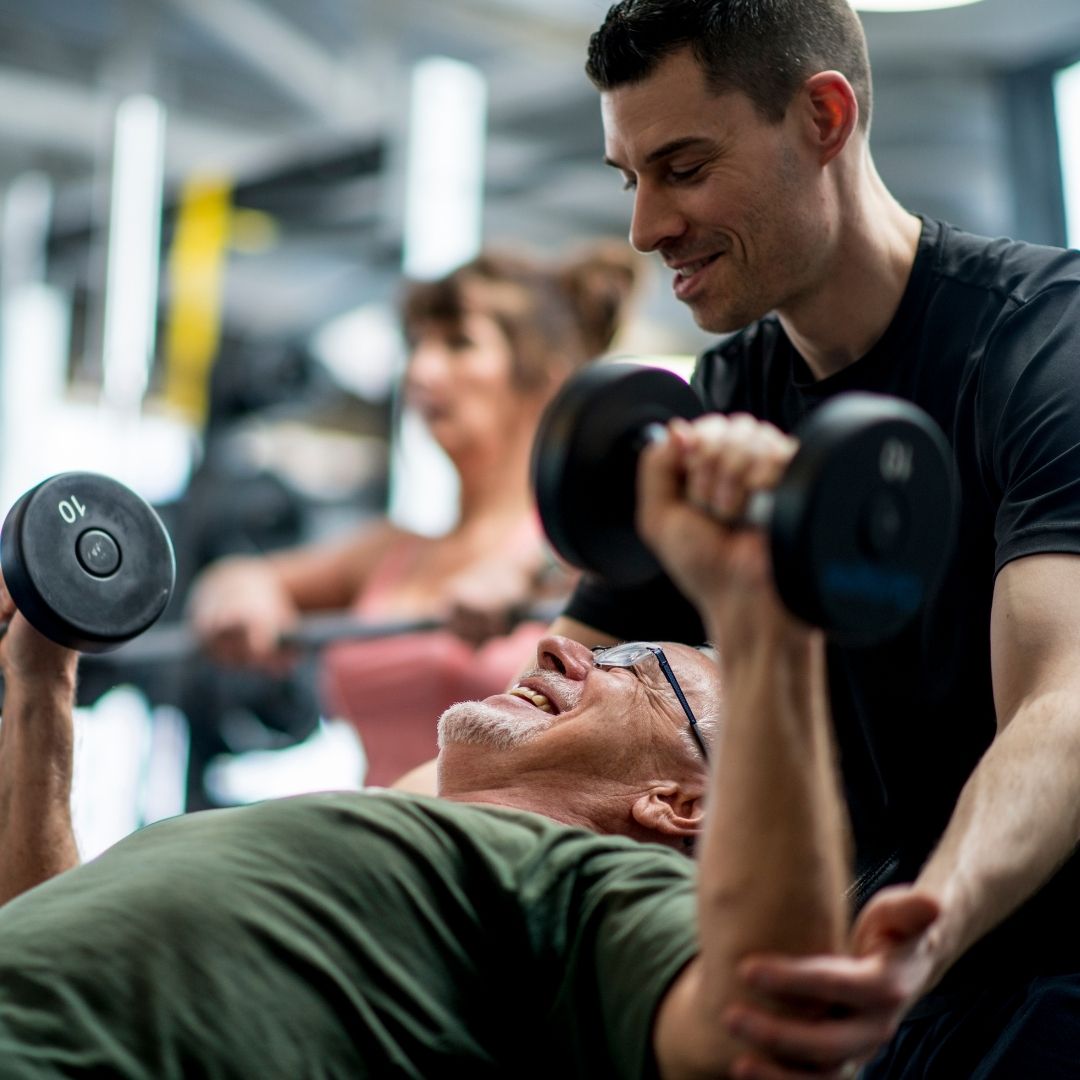
There are many types and styles of personal trainer jobs. It's possible you are unsure where to begin. This article will explain the working environment and educational requirements as well as the range of salaries. Here you can find out about the working hours as well as the salary range. For more information, continue reading! You can apply for a job at a gym if you are ready to train new clients. Continue reading to find out more about the job description, and how you can get started.
Work environment
Personal training is an exciting career. Personal trainers are able to work from home which is a plus, but it is still quite demanding. This occupation requires the ability to lift fifty pounds, bend and reach, and be able to move around. Trainers must also be flexible and able work in multiple areas. Personal trainers are constantly on-the-move, which means they need to be able work out and travel comfortably.
Personal trainers can choose to work in a quiet office or noisy gym. The former may be more comfortable for some people, but it is also important to take into consideration the client's personality and physical capabilities. The stability and predictability of working in a gym might be a plus. Personal trainers need to consider the lifestyles and preferences of their clients when selecting an environment for work. What they like will determine the right environment for them.

Education required
A certification from a national certifying body is a good way to make sure you can offer the best services to your clients. There are many organizations that offer certifications in this field such as NASM or ACE. A certification will give you the credentials you need to start your career as a personal trainer. It is important that you note that getting your certification is not free. Also, it can be very expensive. You will still be able to provide the best health care for your clients. Certification is an important advantage in the fitness industry, and it will get you more respect than a non-certified trainer.
A personal trainer is someone who has attained the age of 18 and has a GED or high school diploma. You can usually complete the GED requirements with ease. You don't need a college education to become a personal coach. However, you must be physically fit to do the job. The certification allows you to focus on your specific area of fitness, or specialize in other types of fitness.
Salary range
Personal trainer salaries vary depending on where you live and how much experience you have. Trainers working in big cities might charge $100-150 per session. However, those working in smaller towns and rural areas could earn as low $40 per hour. The higher a personal coach's experience, the better their salary. However, personal trainers generally make around PS20,000 to PS30,000 a year. A personal coach with at least five year's experience should be able to expect to make about $35,000 per calendar year.
An independent personal coach can get a higher salary by obtaining a degree. A degree gives a personal trainer the ability to work with clients beyond just training them. It may also allow them to write exercise books or manage large teams. A higher degree will increase your value, with 32% earning an advanced degree. A post-graduation degree can lead to lucrative careers, such as being a military sports trainer.

Working hours
The working hours of a personal trainer are generally flexible. Some personal trainers work on weekends and late into the night. Some may work 12 hour days to build a client base or recruit new clients. Working from home or at a public fitness facility is not uncommon, as long as you have a flexible schedule. You can even work aboard cruise ships! You can read more about this. Let's start by looking at the job description and responsibilities of a personal traine.
As a personal trainer, you are the boss. You will not be told how long it takes to train clients. The length of your sessions will be up to you. In the beginning, expect to work between twelve and fourteen hours per day. While it is perfectly acceptable to work twelve-to-14 hour days to build a client base you shouldn't be working more than twelve-to-14 hours each day.
FAQ
Is it possible that you can be too thin?
Yes! Being underweight or having an eating disorder are both unhealthy. It is not normal for someone to weigh less than their ideal height. A person may feel tired, weak, dizzy or experience other symptoms that might indicate they are underweight.
What is Nutrition Good for?
Your body functions properly when you have the right nutrition. A balanced diet that includes plenty of fruits, vegetables, lean protein, whole grains, healthy fats, and lean proteins is the best way to ensure you get adequate nutrition.
Are there exercises I shouldn’t perform?
Before starting any new exercise program, you should consult your doctor. Some people are unable to exercise due to injuries. Some activities also require special equipment. Swimming, for example requires a swimming suit and access to the water.
How can exercise and nutrition help you live a healthier life?
Exercise is good for your health, weight loss, muscle growth, stress reduction, and overall well-being. Nutrition is essential for energy, sleep and mood as well as overall health. If you want to live longer, eat less meat, drink alcohol moderately, avoid smoking, and do regular physical activity.
What effects does caffeine have on my sleep patterns?
Caffeine can affect how quickly you fall asleep, and how well you sleep. Caffeine causes drowsiness, which makes falling asleep easier. However, caffeine can keep you awake longer and make it more difficult to fall asleep. If you drink coffee or energy drinks right before bedtime, try drinking them later in the evening instead.
What happens if there isn't enough sleep?
If you don't get enough sleep, your brain doesn't receive the signals needed to regulate hormones and chemicals in regulating appetite and metabolism. As a result, you may overeat and gain weight. Sleep deprivation can also lead to excessive weight gain.
Statistics
- One study showed that adults who watch more than 4 hours of television daily had an 80% higher risk of death from cardiovascular disease. (heart.org)
- In 2018, the World Health Assembly agreed on a global target to reduce physical inactivity by 15% by 2030 and align with the Sustainable Development Goals. (who.int)
- Globally, 28% of adults aged 18 and over were not active enough in 2016 (men 23% and women 32%). (who.int)
- In high-income countries, 26% of men and 35% of women were insufficiently physically active, as compared to 12% of men and 24% of women in low-income countries. (who.int)
External Links
How To
How to burn belly fat faster
When we are trying to lose weight, belly fat is often seen as a problem. It's actually a good thing, in fact. Your organs will be protected by the amount of belly fat. Let's learn how to quickly burn belly fat.
The two main factors that make us store body fat are stress and lack of exercise. The cortisol hormone stimulates stress which makes us hungry. Cortisol can increase insulin levels in the blood. The excess calories are stored as fat by insulin. Lack of sleep causes the release of adrenaline into our system, leading to increased appetite. Exercise helps to break down these extra calories.
There are many ways you can reduce belly fat. Depending on your budget, you can try each one. Here are some quick tips to get rid of belly weight.
-
You can eat less. Don't eat three large meals at once. This will help you consume less calories.
-
Drink plenty of fluids. Water helps flush out toxins from the body and keeps you hydrated. Also, drinking water before every meal will keep you feeling full longer so you won't overeat.
-
Avoid eating unhealthy snacks. If you're looking for quick fixes, snack foods like chips, cookies, candies, etc. might seem tempting. But avoid these fattening treats as they contain lots of empty calories and too much sugar. Instead, choose healthy alternatives like fruits, veggies, nuts, seeds, and whole grains.
-
Three times per week, strength training is recommended. Strength training helps build muscle mass, which means that you can burn more calories even when you are resting. It also strengthens bones, muscles, ligaments, tendons, the heart, lungs, and joints.
-
Regularly walk or stretch. Stretching increases flexibility and mobility. It also reduces back pain. Walking can help you burn calories.
-
Reduce alcohol intake. Your diet is empty of calories, and alcohol has no nutritional content.
-
Lose weight gradually. Finding out your current weight is the first step in losing weight. Then, add 5% to 10% to your body weight to get your ideal weight. Once you have established your ideal weight, reduce your daily calorie intake by 500 to 1000 calories each day until you achieve your goal.
-
Avoid processed food. These foods contain high levels of sugar, salt, and preservatives. While processed foods can be convenient, they don't offer enough nutrients to ensure your health.
-
Don't skip breakfast! Breakfast is good for your concentration, memory, and energy. You should have protein (such as eggs) and fiber (such as oats) for breakfast.
-
Have regular bowel movements. Gas and bloating can result from irregular bowel movements. Drink plenty of water to prevent gas and fiber ingestion.